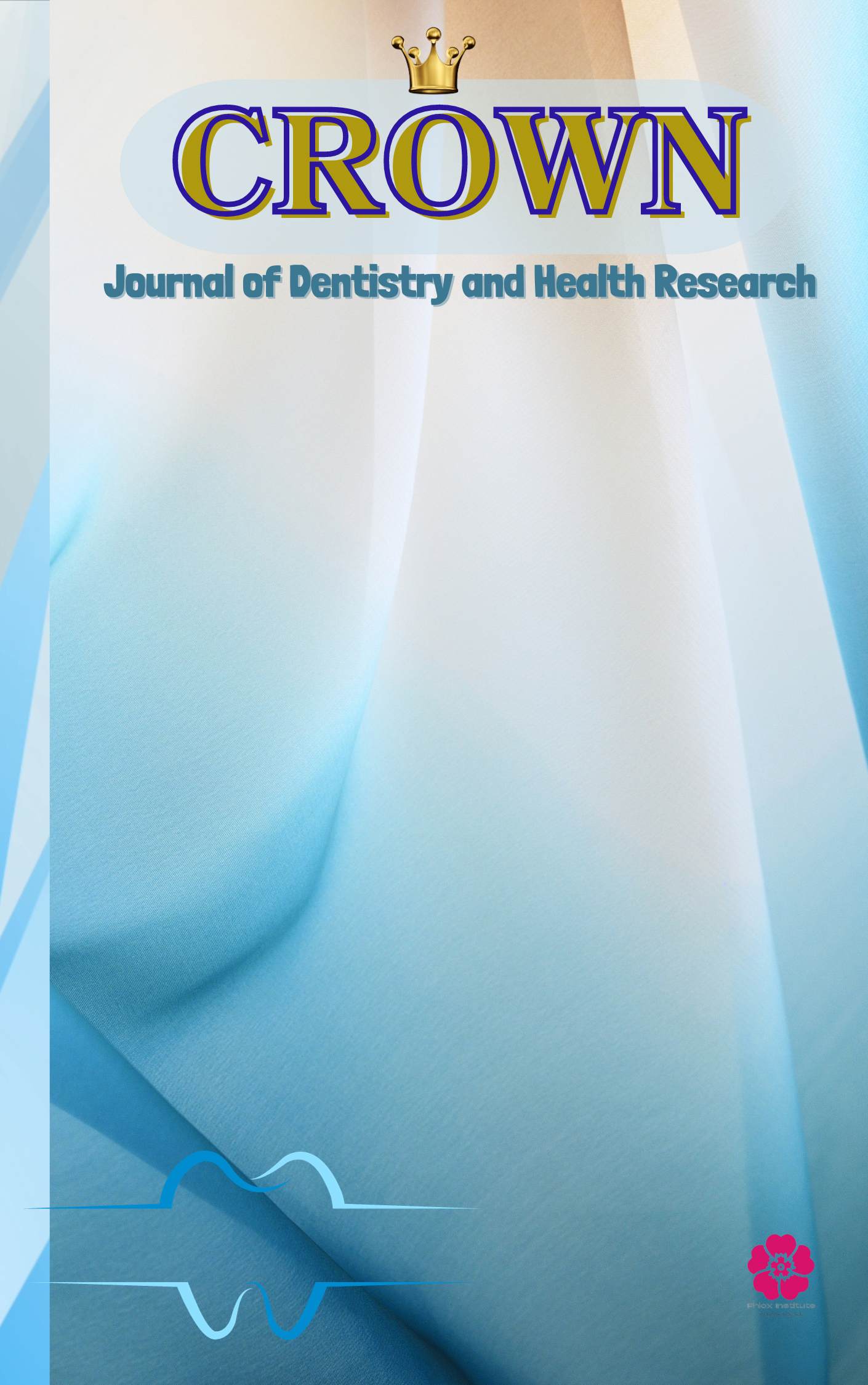Main Article Content
Abstract
Introduction: Peri-implant mucositis (PIM) is a prevalent inflammatory condition requiring effective biofilm management. This study aimed to evaluate the clinical and inflammatory efficacy of a novel bioactive borate glass (BBG) air-abrasion powder compared to a standard glycine-based powder for treating PIM.
Methods: This was a split-mouth randomized controlled trial conducted at the Palembang, Indonesia. Forty-two patients with two implants each, both diagnosed with PIM (Bleeding on Probing [BOP] positive, Probing Pocket Depth [PPD] 4 mm), were enrolled. In each patient, one implant site was randomly assigned to receive sub- and supragingival air-abrasion with the BBG powder (Test Group), while the contralateral implant received treatment with glycine powder (Control Group). Clinical parameters, including Modified Plaque Index (mPI), Modified Gingival Index (mGI), PPD, and BOP, were recorded at baseline (T0), 4 weeks (T1), and 12 weeks (T2). Peri-implant sulcular fluid (PISF) was collected to quantify levels of Interleukin-1 Beta (IL-1β) and Tumor Necrosis Factor-Alpha (TNF-α). Patient-reported discomfort was assessed using a Visual Analog Scale (VAS).
Results: Both groups showed significant improvements in all clinical parameters from T0 to T2 (p < 0.001). At the 12-week follow-up (T2), the Test group demonstrated a statistically significant greater reduction in mean PPD (Test: mm vs. Control: mm; p < 0.001) and a higher percentage of BOP resolution (Test: 88.1% vs. Control: 66.7%; p = 0.012). Furthermore, the reduction in IL-1β and TNF-α concentrations from T0 to T2 was significantly greater in the BBG group (p < 0.01 for both). Both treatments were well-tolerated with low VAS scores.
Conclusion: Within the limitations of this study, non-surgical treatment of peri-implant mucositis using the novel bioactive borate glass air-abrasion powder resulted in superior clinical and inflammatory outcomes compared to standard glycine powder. This bioactive approach presents a promising advancement in peri-implant maintenance therapy.

